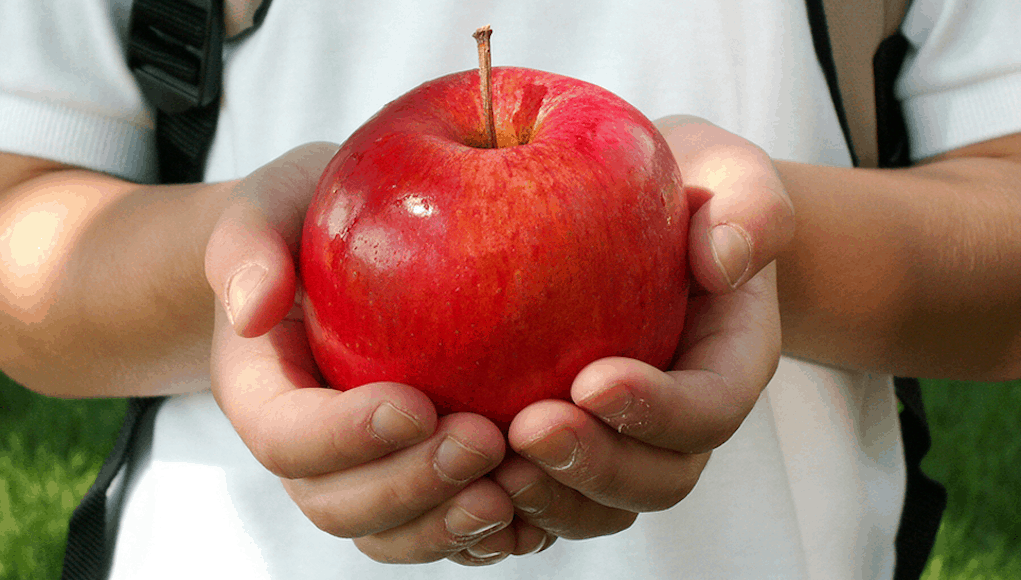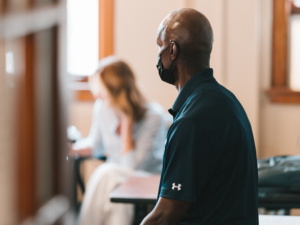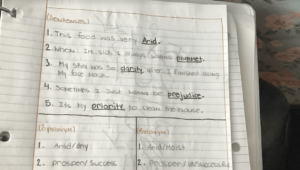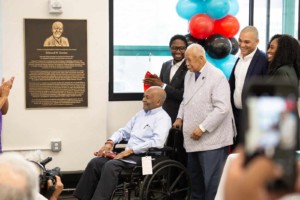25 Reasons to Give Thanks for Teachers

As we approach the holiday season, now is a great opportunity to give thanks for the many things teachers do every day to enrich the lives of students.
While it’s pretty intuitive to know our expressions of gratitude might benefit another person (and that’s enough motivation!), there are also many scientifically proven benefits of gratitude, including:
- Gratitude opens the door to more relationships
- Gratitude improves physical health
- Gratitude improves psychological health
- Gratitude enhances empathy and reduces aggression
- Grateful people sleep better
- Gratitude improves self-esteem
- Gratitude increases mental strength

Team Getting Smart is extremely grateful for educators around the world – especially for those that promote student-centered environments.
Here are 25 teacher behaviors that we are grateful for and that might jog your memory of personal stories about a teacher in your life. Take time during the next few days to let them know how they positively impact our world and #thankateacher.

1) Personalizing. Fourth-grade teacher Stephanie Shaw describes how she personalizes learning with a plan of action. It is not a surprise that she was Mooresville Intermediate School’s Teacher of the Year.
2) Encouraging. Amber Chandler, one of our teacher bloggers not only spends her days encouraging middle school students to make, create and explore through projects, but spends her free time writing books to help fellow educators. Check out our reviews of her latest two books, The Flexible SEL Classroom and The Flexible ELA Classroom.
3) Appreciating. Mayerson Academy in Ohio encourages teachers to affirm and appreciate strengths in students and Jillian Darwish offers practical tips and tools to help teachers and students choose kindness.
4) Designing. The entire staff of One Stone (Boise, Idaho) for providing students with access and opportunity to “own” design thinking in their growth as learners, and individuals that will change the world through a solution mindset.
5) Expecting. Karen Balbier and Julia Rivas Lopez of the El Paso Independent School District offer their tips for raising expectations and maximizing learning in a digital environment via this Hangout recording.
6) Instilling. There aren’t many things we can thank teachers for more than for their efforts to instill a love of learning through hands-on experiences and a lot of heart. Science teacher Mr. Logan Carstensen of Lake Middle School is a great example.
7) Envisioning. Principal Scott Rowe from Huntley Community School District 158 in Illinois creates a vision for transforming what might be called by some a “traditional school environment” into a school students need for the future.
8) Performing. Getting Smart Teacher Blogger John Hardison creates powerful learning with his interactive learning structures.

9) Iterating. Thought processes are complex. Jessica Goldstein of Denver School for Innovation and Sustainable Design (@dsisd_dps) is constantly experimenting with her students and encouraging them to do the same. Listen to a Hangout with Jessica’s tips for iterating learning in a digital environment.
Thanks Jessica Goldstein @dsisd_dps for sharing expertise w/@DigiLearnInst #DigitalScholars @Getting_Smart pic.twitter.com/ogbQPMJAer
— Mary Ryerse (@maryryerse) April 29, 2016
10) Persisting. There is a lot of emphasis on helping students practice a growth mindset and to persist through challenges. In a recent podcast, Dr. Dan Siegel (@DrDanSiegel) talks about how the act of serving others (what teacher doesn’t do that?) builds persistence.
11) Exploring. Rachelle Dene Poth encourages learners to explore tech tools (and the world!) by connecting learners around the globe through project-based learning.
12) Expanding. Students’ perceptions of themselves and the world can expand when teachers encourage it. Elementary Media Specialist Mrs. Wickman of District 833 expands kids’ worlds each day by encouraging reading, coding and more!
13) Illuminating. Many secondary students across the country participate in the AVID program, which illuminates for students what it means to study and pursue college and career readiness.
14) Building. Lindsey Own cultivates a “maker mindset,” in a variety of ways, including by promoting design thinking through introducing design thinking for teacher leaders. She loves maker spaces.

15) Empowering. When teachers design project-based learning processes that allow students to take off with their ideas through Project-Based Learning– – like New Life Academy’s (@nlaMN) Kathy Lutes did – – they can change the world!
16) Serving. Service projects can be transformational for students and communities. YouthBuild Philadelphia Charter School’s Ameen Akbar and Simran Sidhu, alongside the young leaders of YouthBuild Philly are leading service learning in Philadelphia.
17) Noticing. Karen Ketchum, elementary teacher in Marshalltown School District, noticed if students were silently struggling with something and took the time to pull them aside in private to provide extra instruction.
18) Showing up. We believe in the power of networks to transform education and create powerful personalized, project-based learning at scale. This year the power of networks went beyond learning and showed up when a New Tech Network school in Idaho stepped up and served their fellow school in California when wildfires ripped through much of their community.
19) Modeling. In the classroom and beyond, teachers serve as role models. People like physical education teacher and coach Randy Spring of Liberty Ridge Elementary make a lifelong impact.
20 Adapting. A little flexibility goes a long way. Michael Klein of Highlander Institute coaches others on how to inspire and makes adaptations for students to complete projects and tests.
21) Innovating. Andrew Larson, a Getting Smart teacher blogger created a school garden at his Columbus school to encourage place-based learning experiences across the curriculum.
22) Believing. Sometimes what students need most is someone who believes in them. For students, it helps when this is an educator who knows their struggles and their life experiences. Aled Anaya Escondido Union High School District is an educator who believes.
23) Opening. Doors to special events and opportunities to foster the power of the performing arts have been opened by choir teachers like Mrs. Gullick of South Washington Schools.
24) Laughing. Great educators are reinforcers of positivity, and in many cases this means laughing in the face of struggles and times of strife. John Hardison and his music playlist ideas are a great example!
25) Learning. While the phrase “lifelong learners” can be overused, we thank ALL the teachers who are willing to learn something new (and who are open to learning from their students) in order to prepare students for a future different from our own.
Whom would you like to thank? Feel free to add a teacher name and behavior for which you are grateful for in the comment box below.
For more information, check out:
- You Can Thank Mom for More than the Meal Itself: Family Dinner Matters
- Why Mentors Matter
- The Role Of Advisory In Personalizing The Secondary Experience
Stay in-the-know with all things EdTech and innovations in learning by signing up to receive the weekly Smart Update.







0 Comments
Leave a Comment
Your email address will not be published. All fields are required.